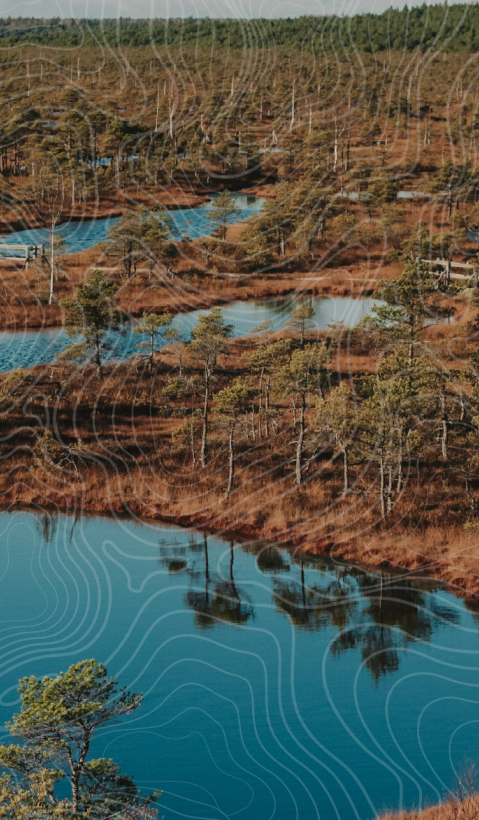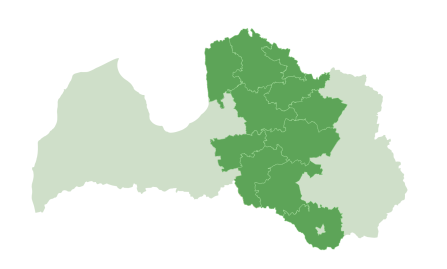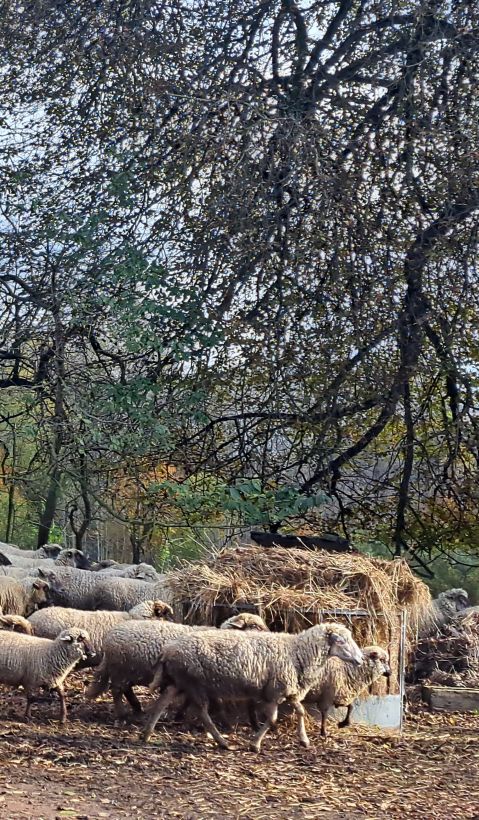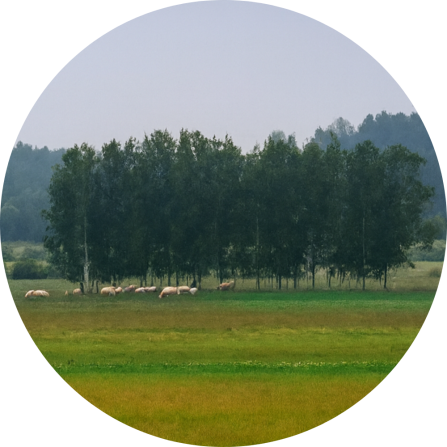



Municipalities

Geographical size

Human population

Number of livestock farmers

Livestock farming systems

Large carnivore species

Wolf population
SOCIOECONOMIC CONTEXT
Although the study area was selected based on large carnivore distribution patterns, it closely aligns with two historical Latvian regions: Vidzeme and Sēlija. Whilst the region shares a common identity today, parts of the area retain distinct cultural characteristics shaped by their inclusion in different countries during historical periods centuries ago.
Agriculture, forestry and fisheries are traditionally well-developed in the region, accounting for approximately 4% of total GDP and employing 7% of the national workforce. Livestock production provides important income to rural communities. The area is home to notable contemporary husbandry centres, including the beef cattle auction house in Sēlija and the sheep breeding and controlled feeding station in Vidzeme.
The region is particularly known for sheep wool production. Local wool processing traditions can be explored at craft markets, which are regularly held at weekends in towns across Vidzeme.


FARMING CONTEXT
Livestock farming has long been at the heart of Vidzeme and Sēlija, as well as of Latvia’s agriculture more broadly, shaped by the country’s grass-rich landscapes and family-farm traditions. Historically, cattle, pigs, and sheep were kept in mixed systems. During the Soviet era, large collective farms industrialised production, but following independence in 1991, the sector shrank sharply as collectives collapsed. Family-based livestock farming gradually returned, focusing mainly on dairy and beef cattle, as well as breed conservation programmes. Pasture farming plays a crucial role in managing the region's diverse terrain, including steep slopes, dry and sandy areas, wetlands, and varied micro-reliefs, all of which would otherwise be difficult to manage. This practice helps maintain the traditional rural landscape valued by local communities and the wider public.
Main Challenges:
Climate change—droughts affecting feed availability and diseases linked to warmer conditions.
Competition from larger and cheaper EU producers, particularly regarding wool products.
Local and EU regulations that can restrict economic activity.
Demand of locally sourced meat has a distinctly seasonal nature, leading to fluctuations in procurement prices throughout the year.
Commercial cooperation amongst livestock farmers is poorly developed.
Lack of research-based knowledge and financial resources necessary to establish high-quality grasslands and ensure reliable feed supply at farm level.
High risk of livestock losses due to attacks by wild carnivores or stray dogs.
LOCAL CONFLICT ASSOCIATED WITH LARGE CARNIVORES
Number of attacks:
Following restrictions on wolf hunting in 2003, the wolf population has increased notably, supported by growing wild ungulate populations. This has led to increased predation on unattended livestock, primarily grazing sheep.
23 cattle and 526 sheep were killed in wolf attacks between 2021 and 2024, whereas the largest number of sheep killed in a single attack was 40.
The actual number of kills is likely higher, as farmers often do not report losses. No compensation is available, and damage can only be officially recorded following inspection by a state official.
Social conflict:
Conflict is comparatively new and growing, seemingly stemming from inadequate stakeholder cooperation.
New Farmers, or those expanding their livestock herding, are often unaware of the risks and costs.
The hunting system relies on voluntary participation by amateur hunters. Their efforts to cull carnivores causing livestock damage are much lower than their efforts to control predators that compete with hunters for wild game.
Authorities do not provide adequate information or financial support for preventive measures.
Transboundary large carnivore management plans with Estonia and Lithuania are lacking.


Funded by the European Union. Views and opinions expressed are however those of the author(s) only and do not necessarily reflect those of the European Union or the European Research Executive Agency. Neither the European Union nor the granting authority can be held responsible for them.
